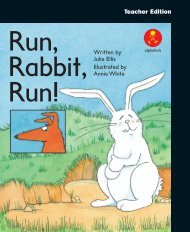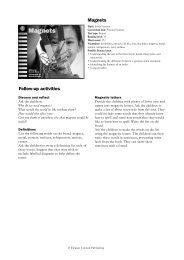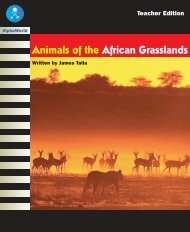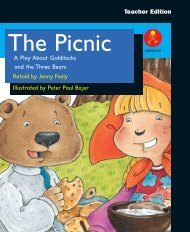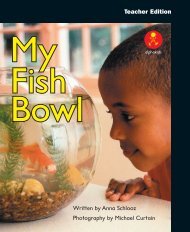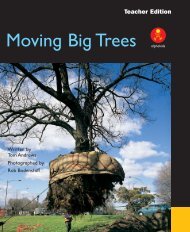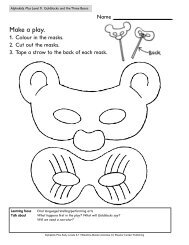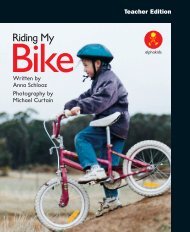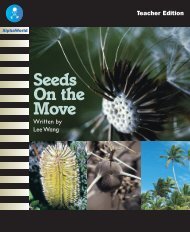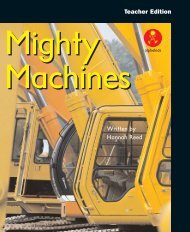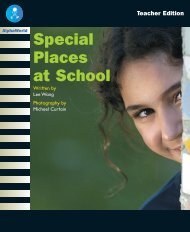L16 TEpp Seashore Plants
L16 TEpp Seashore Plants
L16 TEpp Seashore Plants
You also want an ePaper? Increase the reach of your titles
YUMPU automatically turns print PDFs into web optimized ePapers that Google loves.
<strong>Seashore</strong> <strong>Plants</strong><br />
Being a meaning maker<br />
Encourage the children to support<br />
their answers with evidence from the<br />
book as they discuss these questions:<br />
Why can’t most plants live near the<br />
sea?<br />
What things do plants that live near the<br />
sea have to be able to cope with?<br />
If you lived near the sea what plants<br />
would you plant in your garden? Why?<br />
Being a code breaker<br />
Children may like to explore the<br />
following language features:<br />
• The rime ‘ill’: kill, bill, dill, fill,<br />
gill, hill, mill, quill, pill, sill, still,<br />
till, will.<br />
• The phoneme /s/: salt, seashore,<br />
sea, some, sand, strong.<br />
Being a text user<br />
Refer to the brainstorm chart<br />
children made in the ‘Setting the<br />
context’ section on page 1. Discuss<br />
any new information that could be<br />
added to the chart.<br />
What did you learn by reading this<br />
book?<br />
What else would you like to find out<br />
about seashore plants?<br />
How could you find out new information?<br />
Being a text critic<br />
Why do you think the author wrote a<br />
book about seashore plants for<br />
children?<br />
Were you interested in this topic?<br />
Do you think other children would be<br />
interested? Why or why not?<br />
Does the author understand children<br />
very well? Why do you think that?<br />
12



